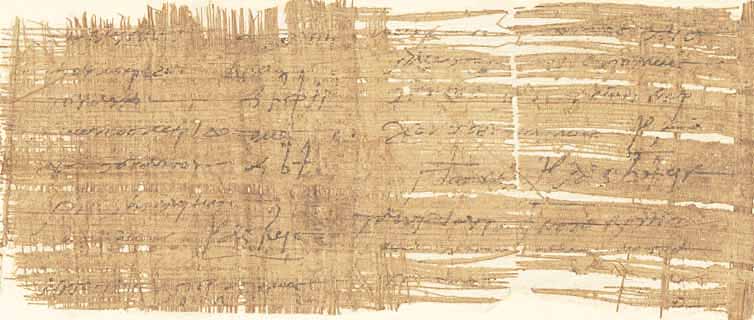BGU I 229 (P. 7318)
We have all been there: you are faced with a difficult decision or an urgent question and simply do not know what to do. It would be extremely practical if you could ask someone who could give you a direct answer. This is exactly what people did in ancient times when they consulted oracles. Two interesting examples of such oracle inquiries can be found in the Berlin Papyrus Collection.
The two documents probably originate from Soknopaiou Nesos in the Fayum, a large oasis southwest of Cairo, and initially belonged to the private collection of Heinrich Brugsch, but were then acquired by the Berlin Papyrus Collection in 1891. Based on the script, they can be dated to the first century or the second or third century AD and are written on papyrus. Both documents comprise four lines and are written in Greek. They are inscribed on the recto (front) parallel to the fibers and show no additional inscription on the verso (back).
The content of the oracle requests is identical. The sick Stotoetis asks the gods Soknopaios and Sokonpieios whether he will recover. The Greek seems rather clumsy and it is also noticeable that Stotoetis is very precisely identified, as his father’s and grandfather’s names have been added. This precise identification was probably chosen to avoid confusion with people of the same name, as no surnames were used at the time to facilitate identification. Therefore, the god asked for help needed a more detailed description of the person concerned.
Consulting an oracle was a common method for making decisions or answering questions in ancient Egypt. However, it only referred to questions that could be answered with a clear yes or no. Questions were asked on a wide variety of topics, but mostly related to illness or private life, but also to answer legal questions.
Normally, two versions of the question were submitted with an oracle query, one positive and one negative, whereupon the person concerned received the correct answer back. But why are there now two almost identical copies of the oracle question, both positive versions? There could be various reasons for this:
For example, two requests could have been submitted at short intervals purely due to the urgency of the matter. One could also consider that Stotoetis wanted to trick the gods in some way by not enclosing a negative version in order to offer the gods only the possibility of his recovery and thus influence his fate. However, a mere scribal error cannot be ruled out either.
The two papyri are two examples of questions to oracles that were often consulted in ancient Egypt for help with decisions or urgent questions. We can only guess what the two identical versions are all about. To what extent the two papyri are connected and whether it is a deliberate duplication remains a mystery.



